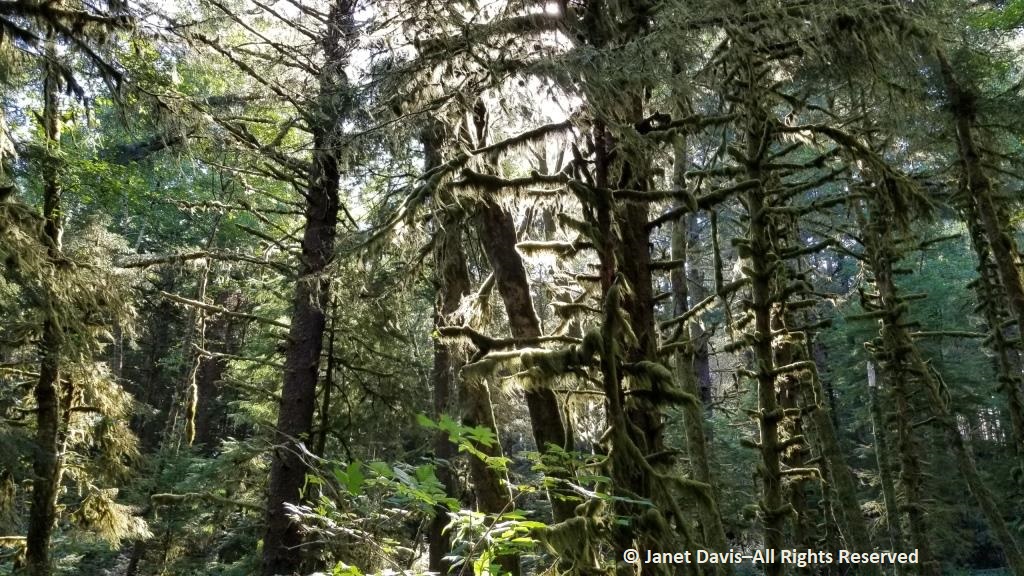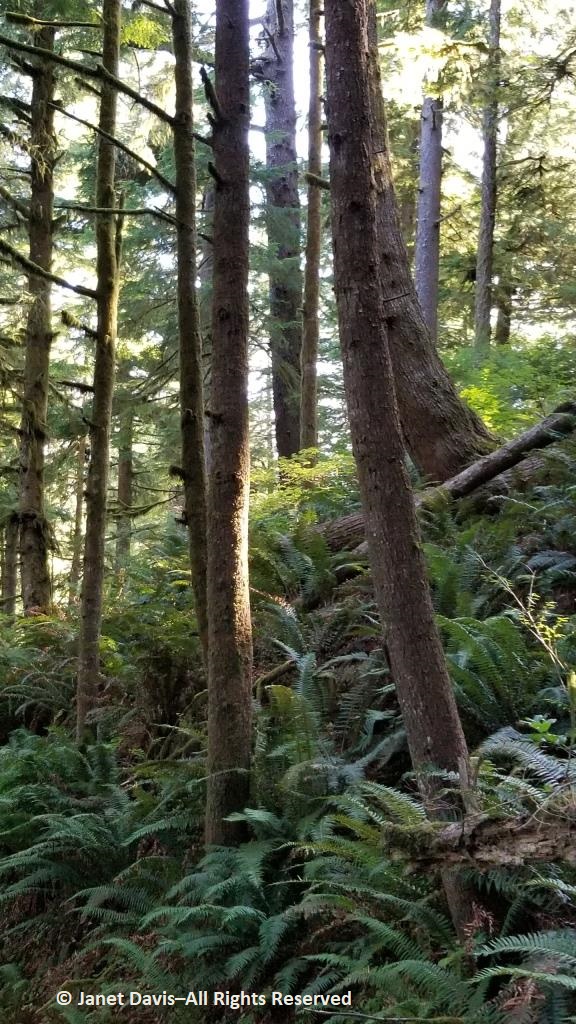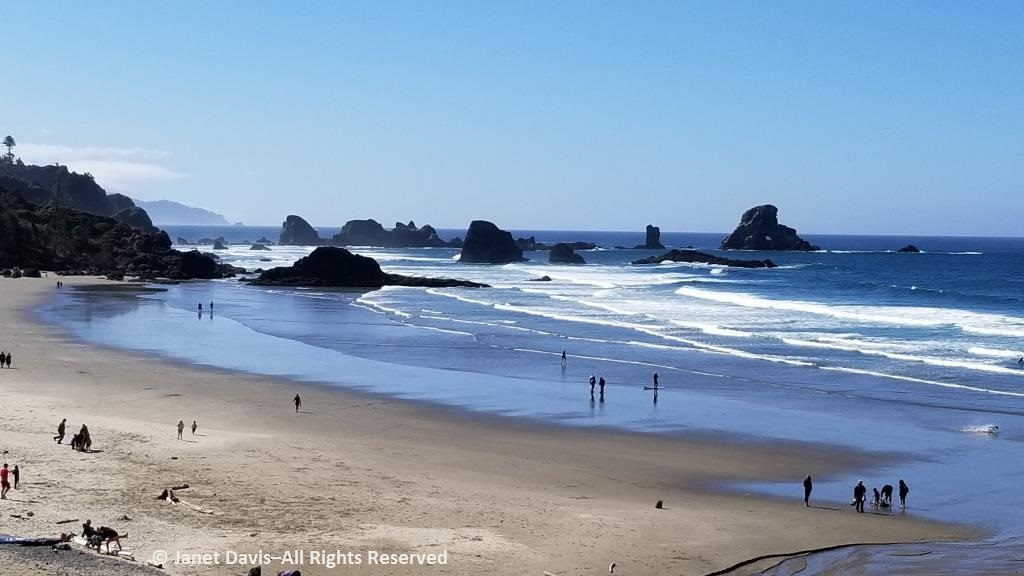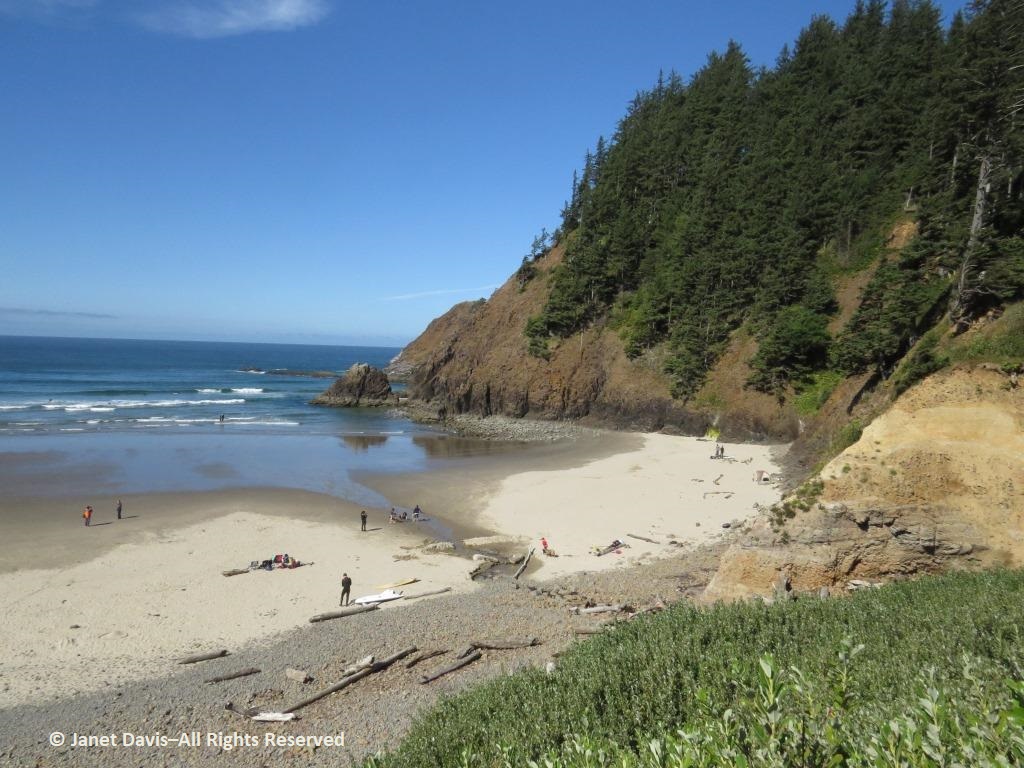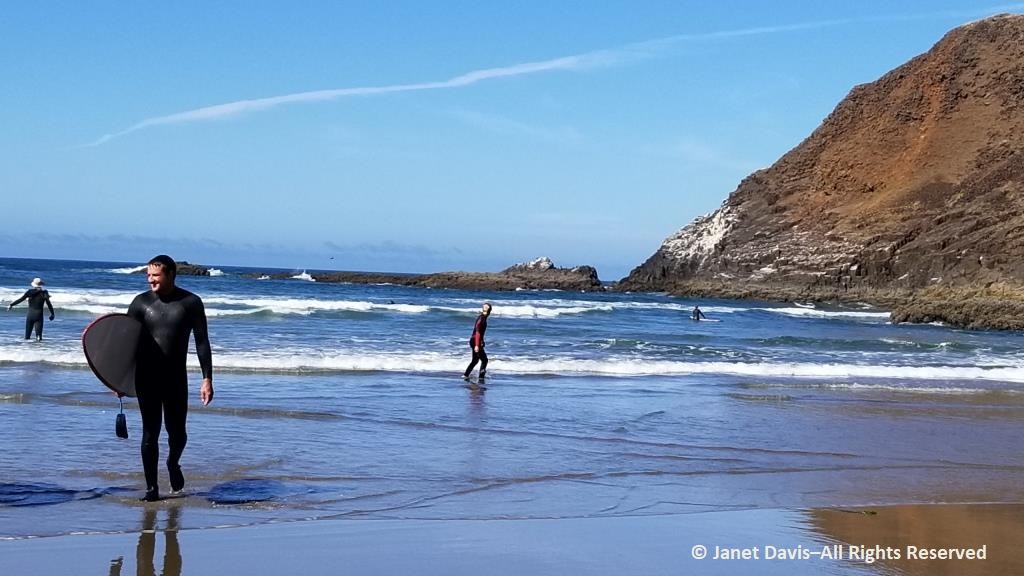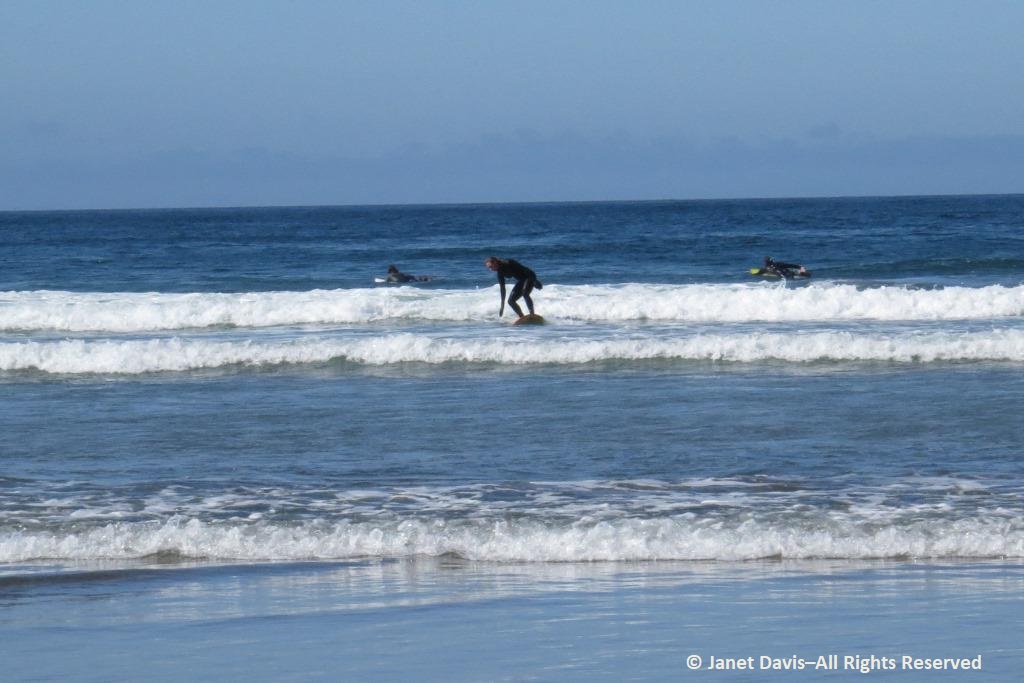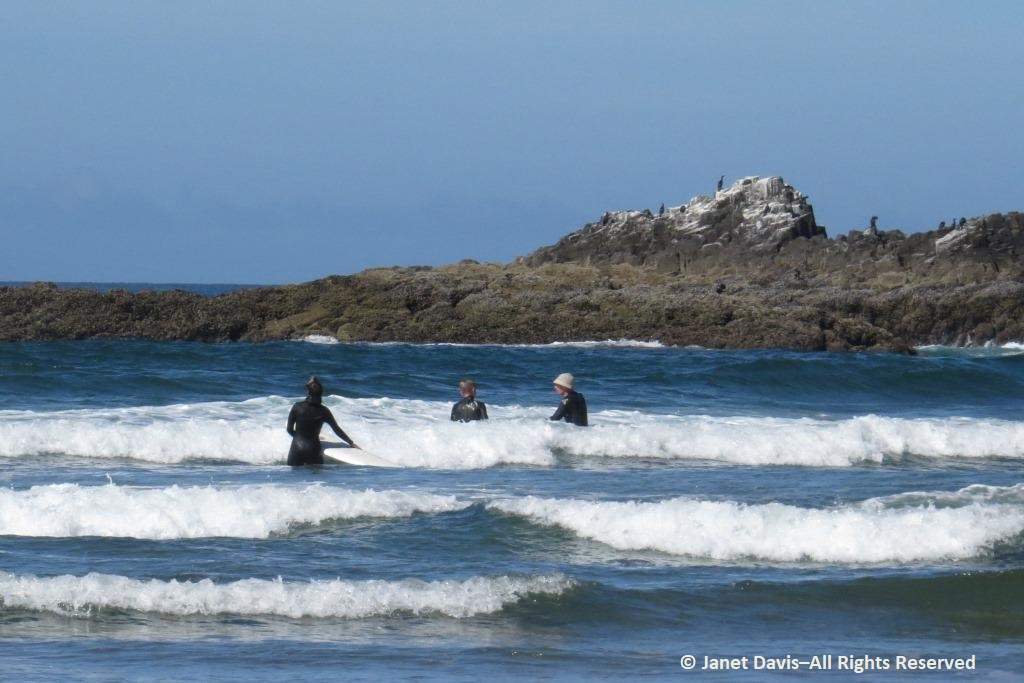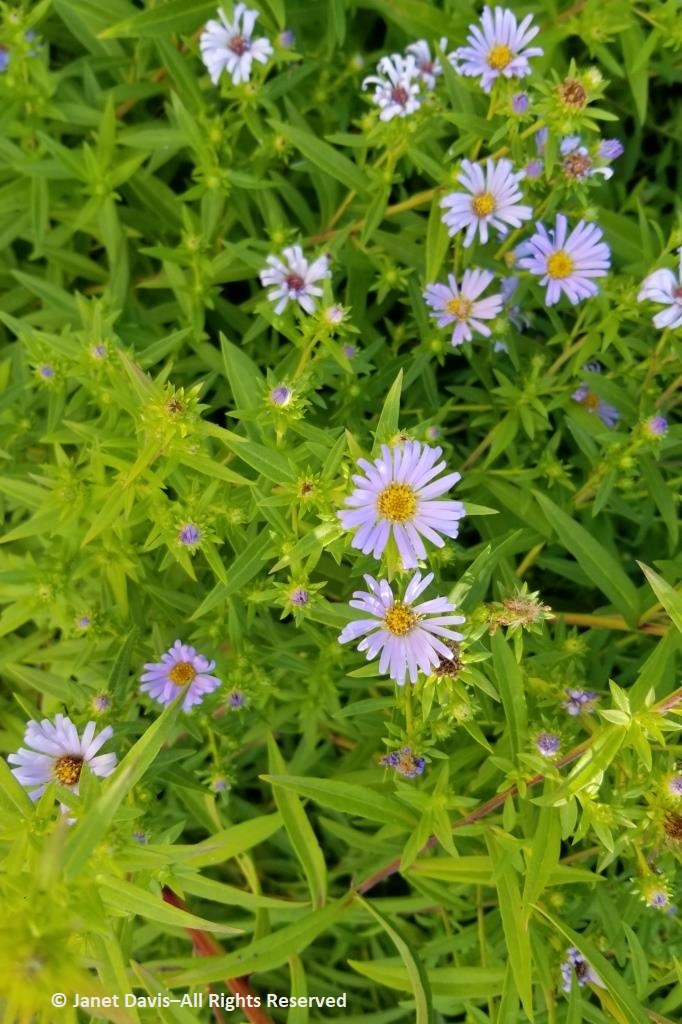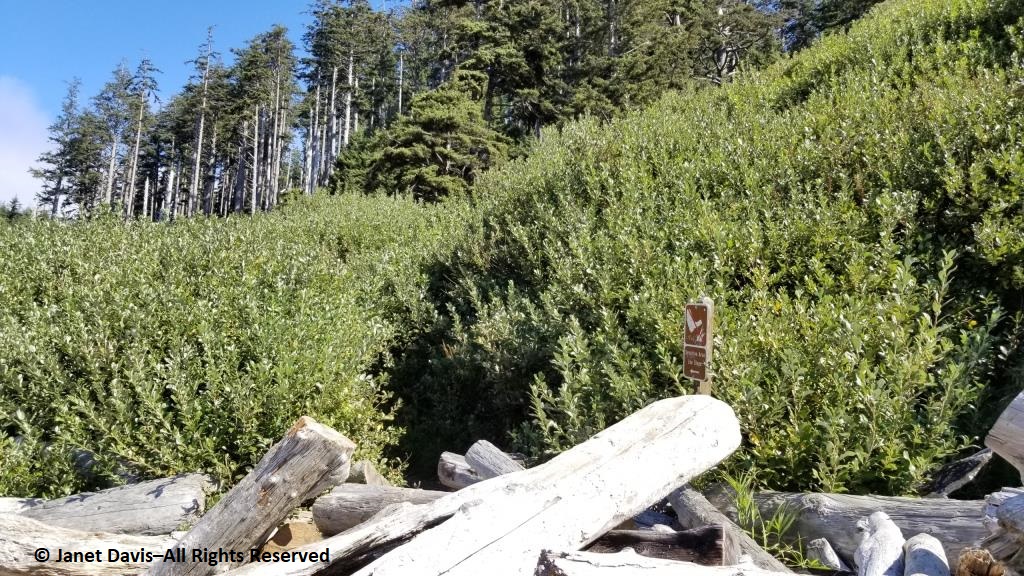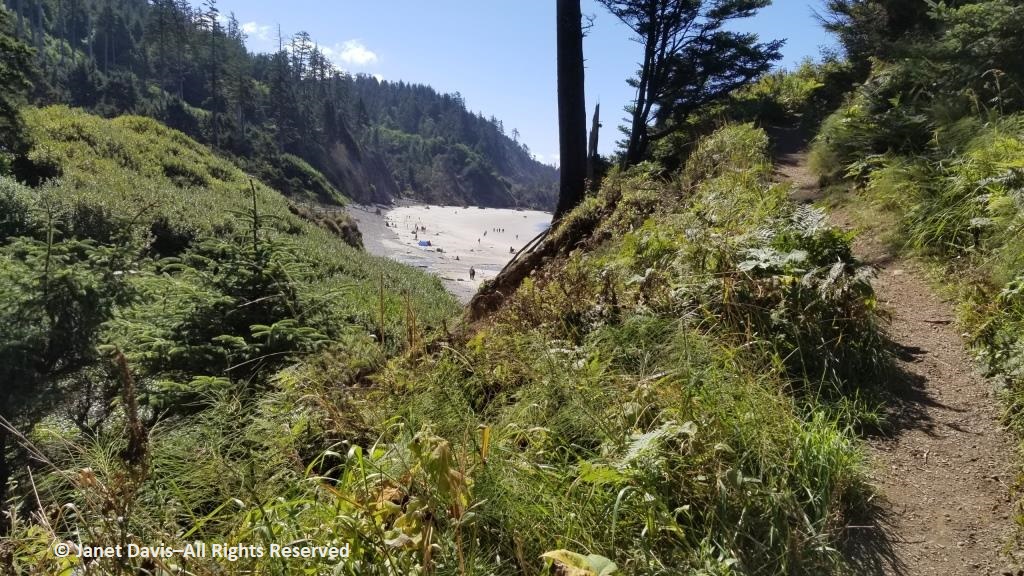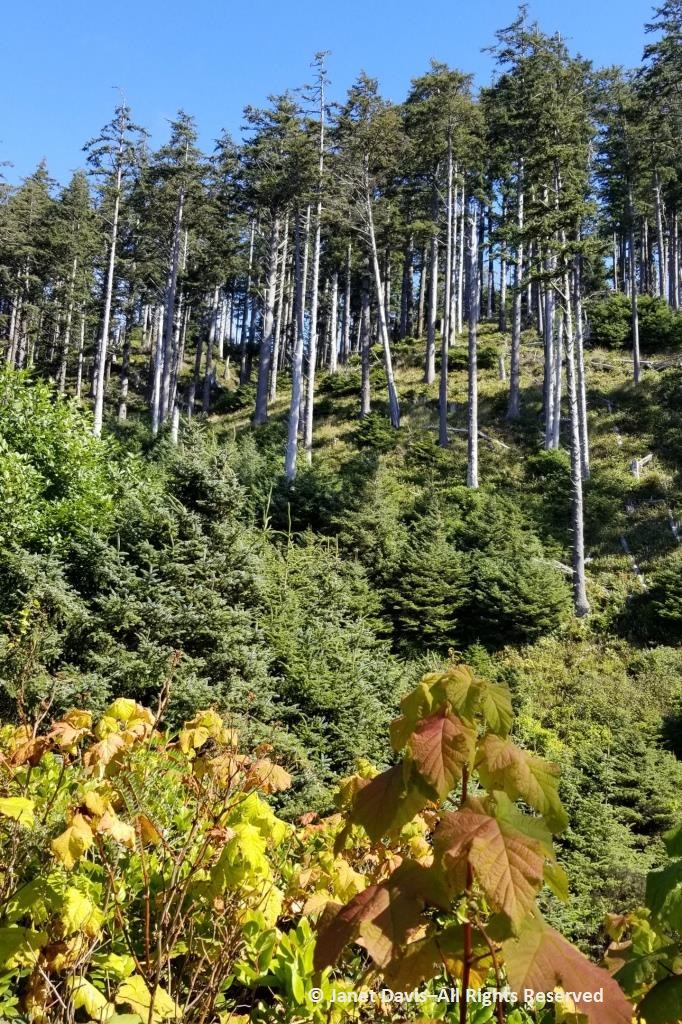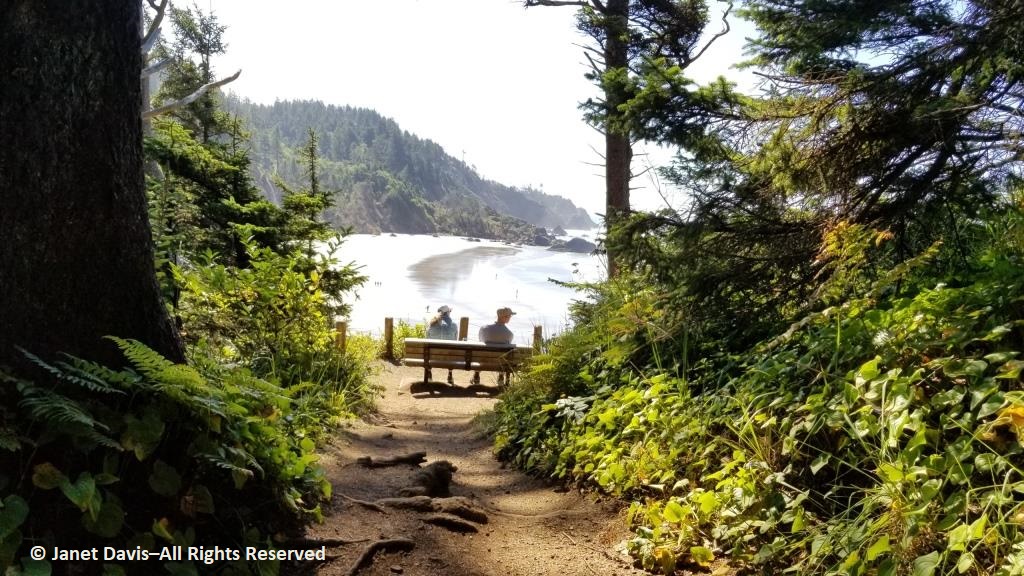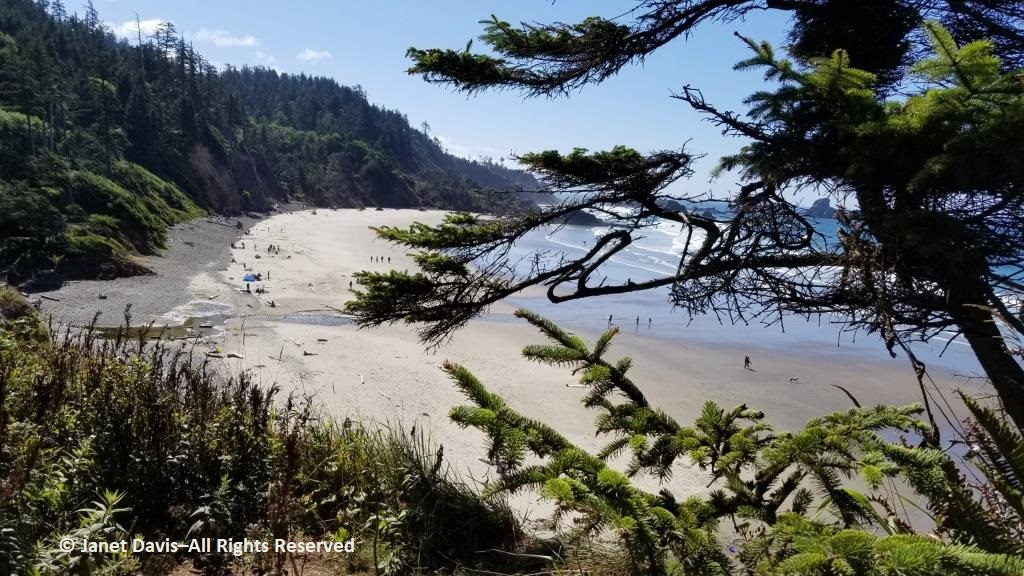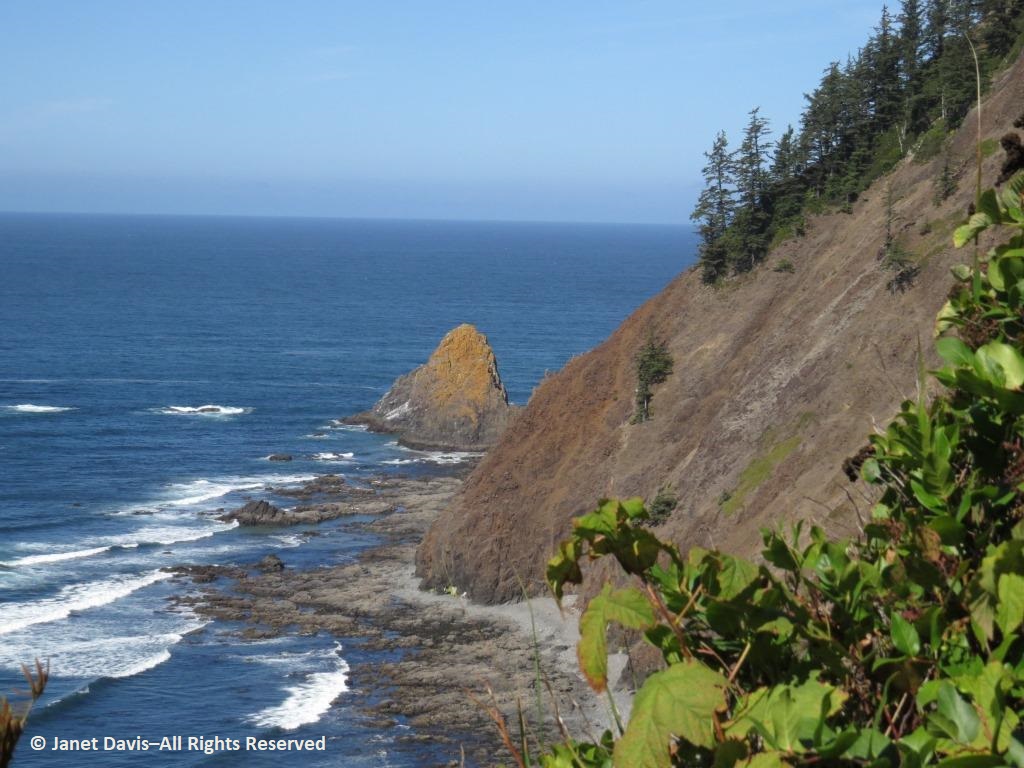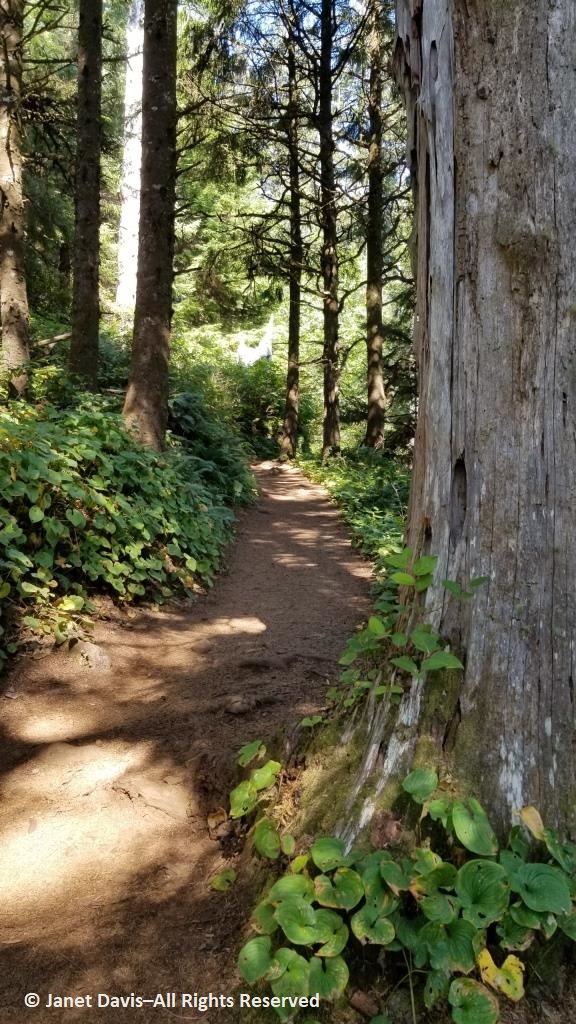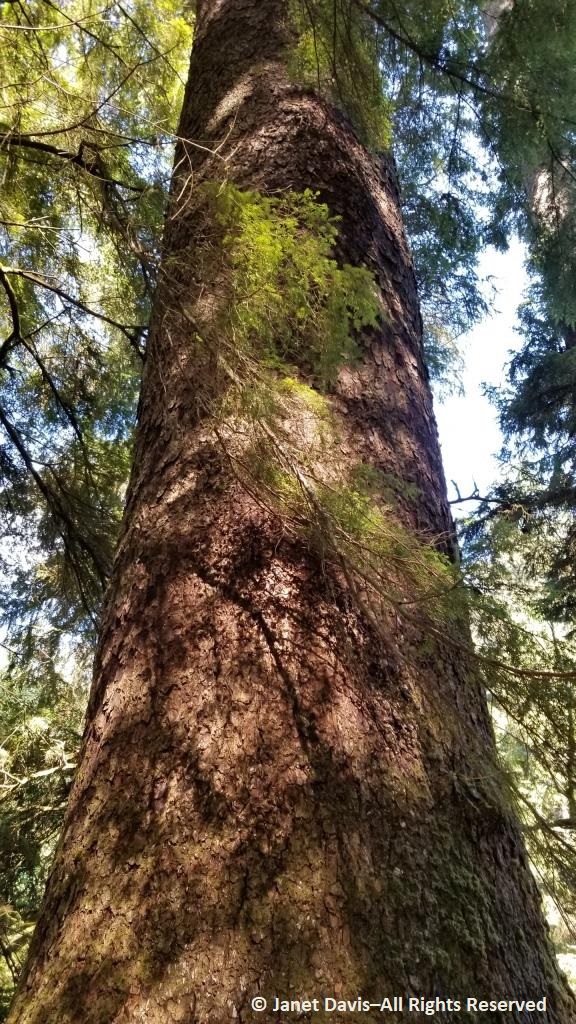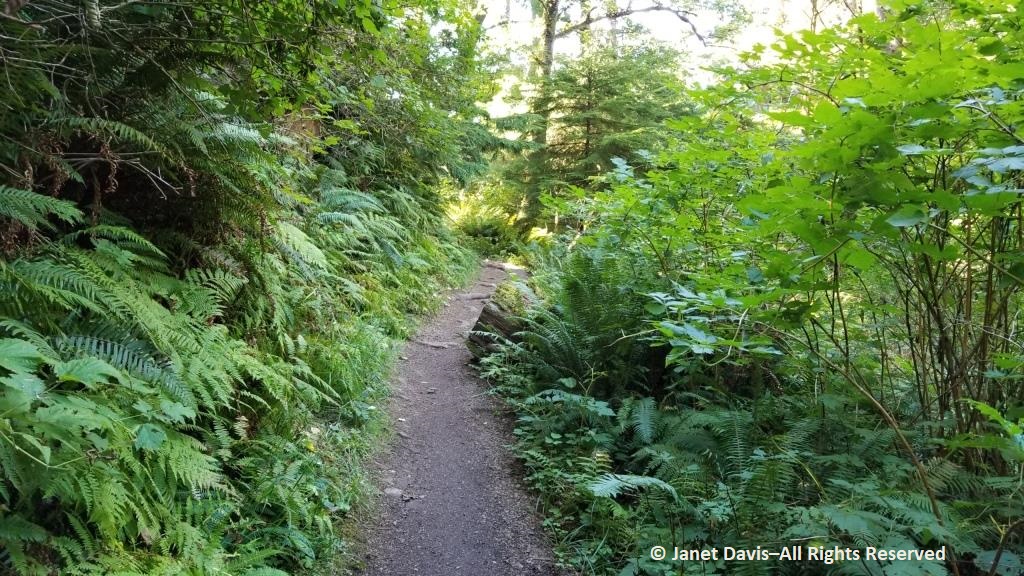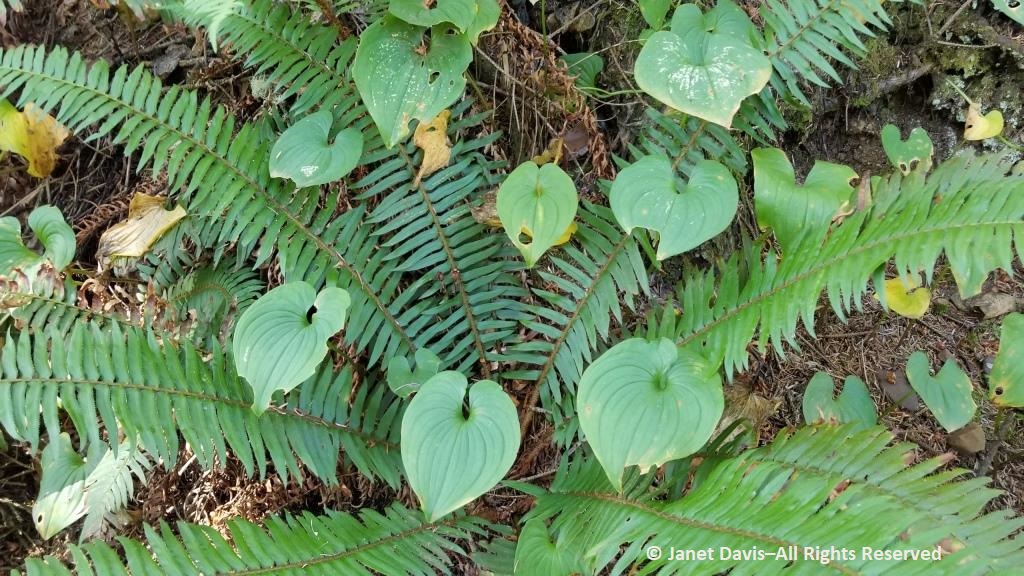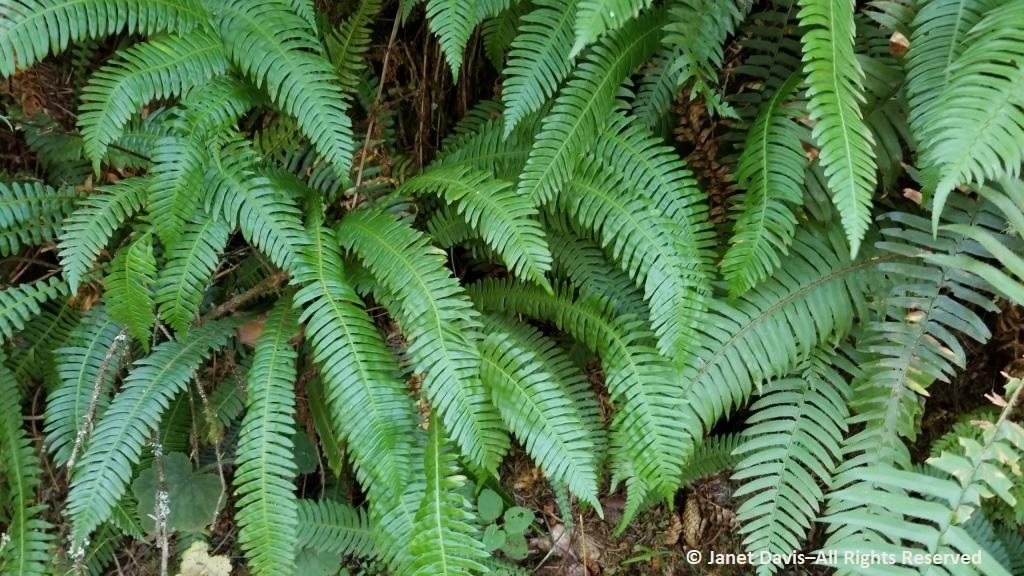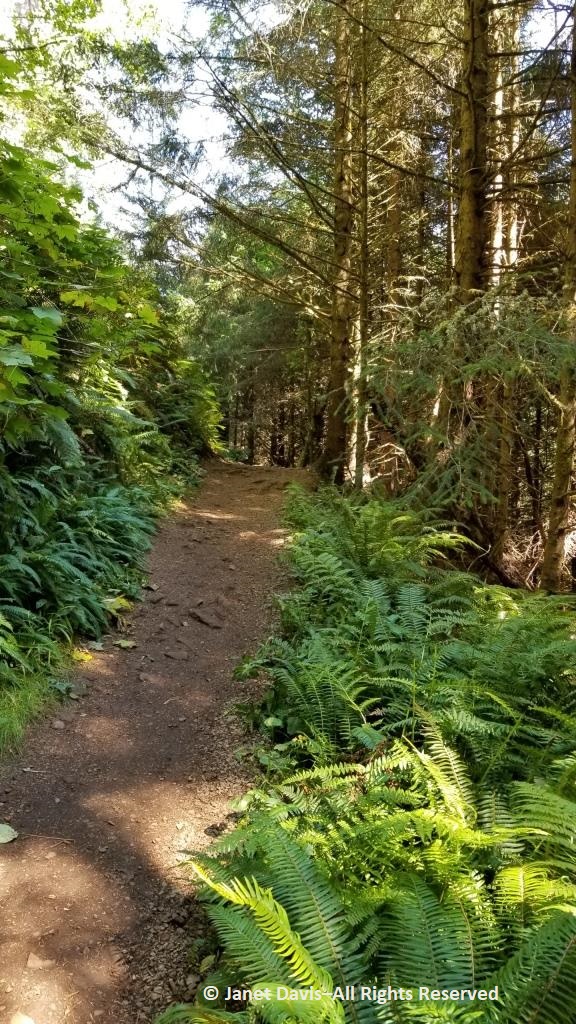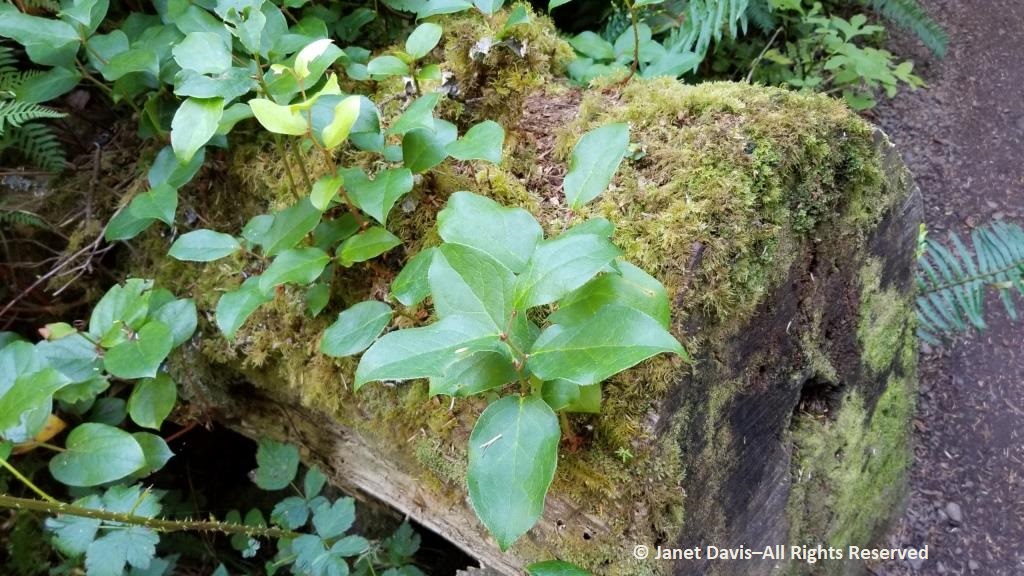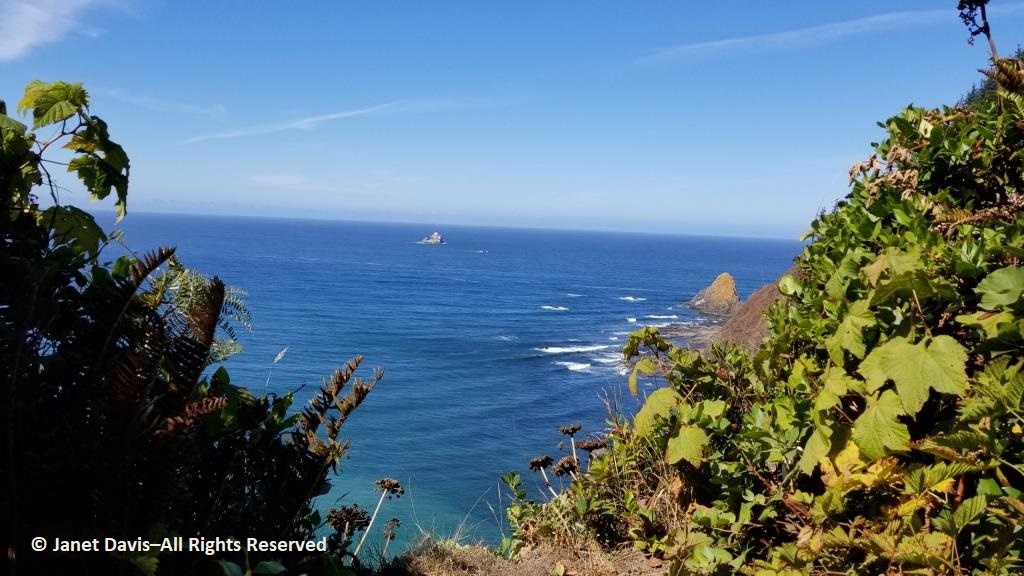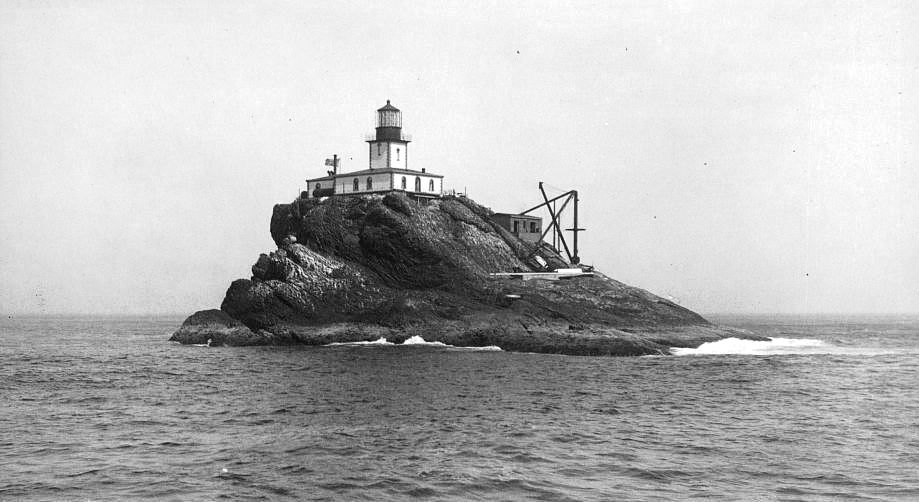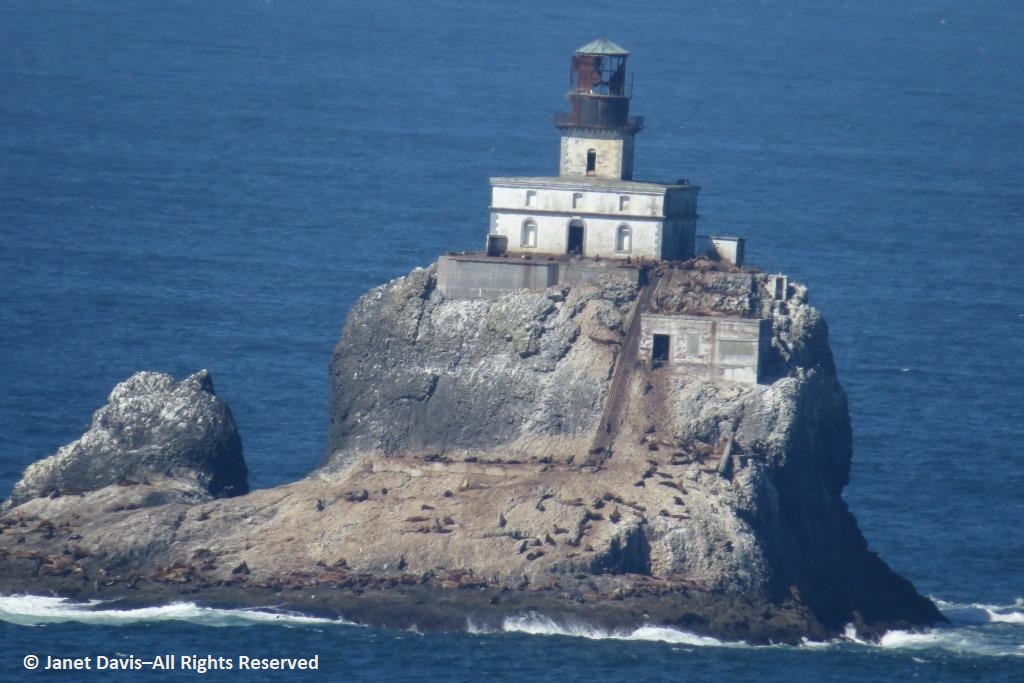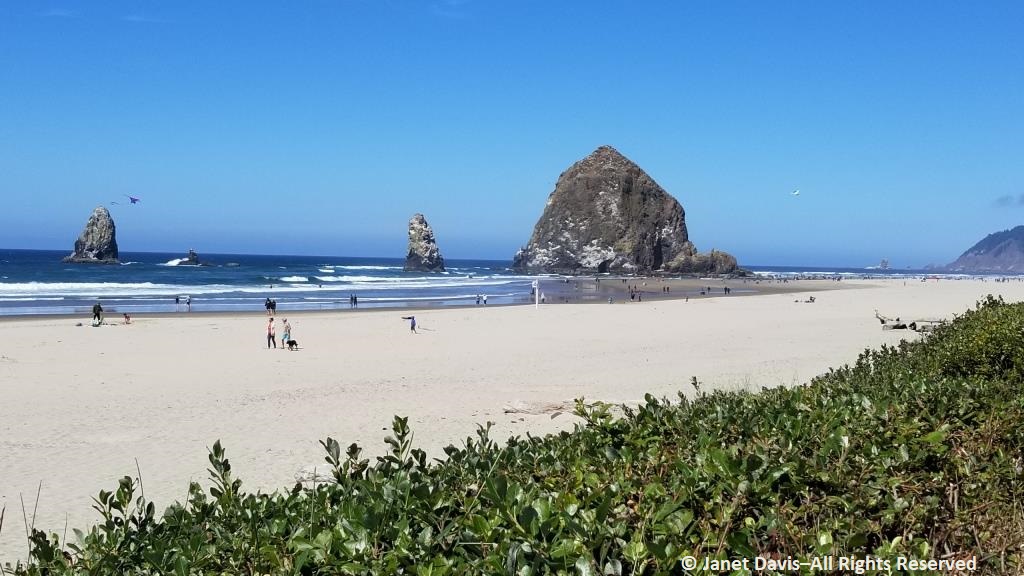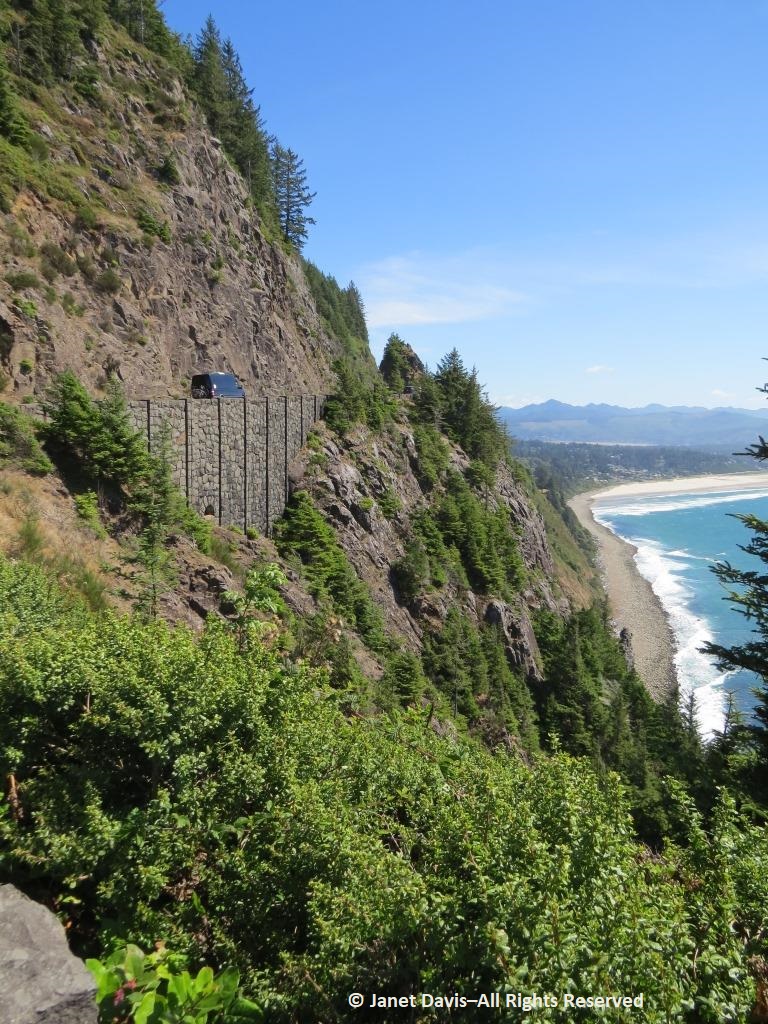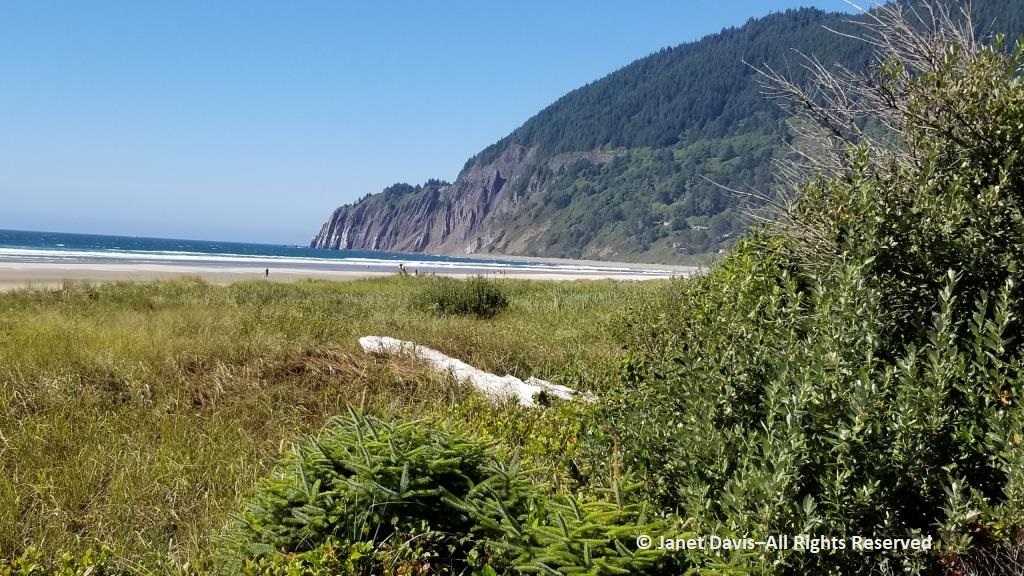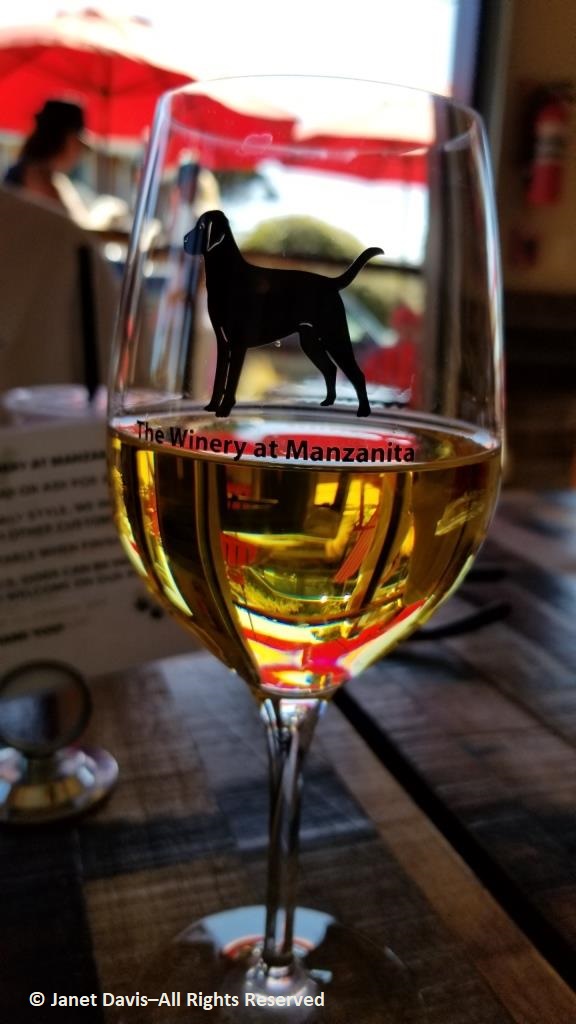At exactly this time last year, we were on a road trip from Vancouver to Seattle (I blogged last autumn about our lovely “Facebook meet-up” picnic at the Soest Garden at the University of Washington). We travelled to Portland and Bend, Oregon to visit with friends, then up through the Painted Hills of eastern Washington into Walla Walla, the Palouse and Spokane, Washington; then the Similkameen Valley and Osoyoos in B.C.; and finally through the mountains to Vancouver. It was a spectacular time to be on the road (and I’m going to try to catch up on my blogs this month). One of the most beautiful natural attractions was the 1,024-acre Ecola State Park on the Oregon coast between Seaside and Cannon Beach, where we entered through a Sitka spruce forest (Picea sitchensis), the hulking trees dripping with moss.
The park’s 9-mile coastal property was cobbled together between 1932 and 1978 through donations from private landowners, an old WWII Army Radar station and from Crown Zellerbach Corporation, which had previously logged many of the first growth trees. (Coincidentally, “CZ” was my very first employer in Vancouver; I worked for them for 6 years in the late 60s and early 70s). I would have loved to get out of the car to explore this mossy, fern-carpeted forest but it was a narrow, winding road into the parking area nearer the beach with no spot to pull off.
Our first glimpse of the mighty Pacific Ocean here was from the parking lot looking south across cove-shaped Indian Beach towards the sea stacks leading to the popular town of Cannon Beach. Sea stacks are the remnants of old, eroded headlands, often atop basalt from ancient volcanic flows.
Looking north over a shore drift of dune willow (Salix hookeriana), we gazed at the jutting Tillamook Head, named for the native Tillamook (Kilamox) tribe whose ancestral history is on this land. Tillamook Head is also volcanic, the product of a massive lava flow from western Idaho some 15 million years ago, followed by uplift as the coast mountain range formed.
Surfers were enjoying the waves….
…. which weren’t massive the day we visited……
….. so allowed for lots of conversation. Note the cormorants on the sea stacks behind.
Pacific aster (Symphyotrichum chilense) was in bloom at the shore.
We headed through a narrow opening in the dune willow on the beach towards….
…… the 2.5 mile Clatsop Loop Trail, with its pretty views south….
…. and up towards a stand of Douglas firs (Pseudotsuga menziesii)….
… and comfy benches for resting.
It was only after researching later that I discovered that this was travelled in 1806 by Captain William Clark (Lewis & Clark) and twelve members of his Corps of Discovery. He pronounced the view from Tillamook Head as the “grandest and most pleasing prospect” he had every surveyed.
This is the view of the cliff edge of Tillamook Head.
Away from the edge, the trail passed through cool temperate rainforest….
…. under several types of trees, including towering western hemlocks (Tsuga heterophylla).
There was a good variety of native understory flora including….
….. false lily-of-the-valley (Maianthemum dilatatum)….
…. and deer ferns (Struthiopteris spicant).
It was easy hiking, not steep at all. And I wished I had a week to botanize there with a proper field guide.
Salal (Gaultheria shallon) grew out of a moss-covered log.
Near the summit of the Clatsop Loop trail was a view through vegetation out to the Tillamook Light.
This historic lighthouse was built in 1881 at great cost. In fact, at the time it was the most expensive lighthouse anywhere in the United States.
I took out my little ultra-zoom camera to pick out the seals basking on the basalt under the old structure, now deactivated but on the historic list.
And then it was time to retrace our steps, exit the park and drive further south. Not far away is Cannon Beach and its famous Haystack Rock. After a fast walking tour of this too-crowded vacation town, we drove south over…
….the spectacular Oregon Coast Highway hugging Neahkahnie Mountain, an engineering marvel built by the Bureau of Public Roads between 1939 and 1941. As the interpretive sign said: “The road gracefully follows the contours of the mountain, accentuates the natural features of the landscape, and displays elaborate stone walls and curbing.”
We made lovely Manzanita, Oregon our stop for lunch, with a short walk along the beach to gaze back north on the headlands we’d traversed to get here.
And then we found a sweet little bistro with its own fruit wine offerings – the end to a perfect Oregon coast morning.

